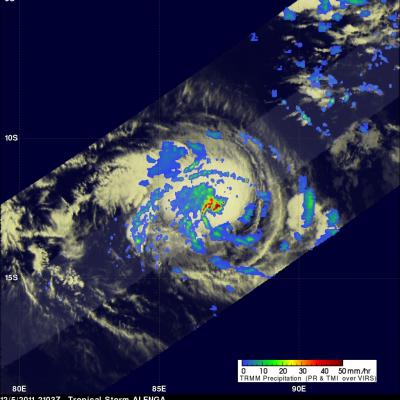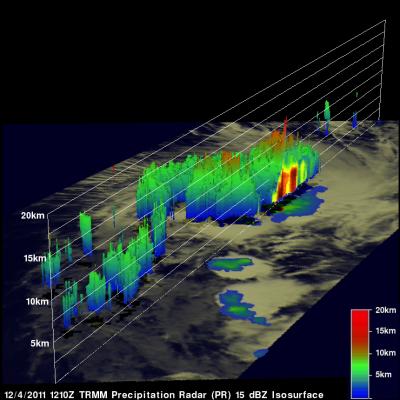TRMM Sees Powerful Tropical Cyclone Alenga
Tropical Cyclone Alenga's wind speeds increased to a maximum of about 90kts (~104 mph). Alenga had weakened from this maximum intensity when the TRMM satellite passed directly above in the early evening of 8 December 2011 at 1005 UTC. A precipitation analysis from TRMM's Microwave Imager (TMI) and Precipitation Radar (PR) are shown above overlaid on a Visible/Infrared image from Visible and InfraRed Scanner (VIRS) data. This analysis shows that very heavy rainfall of over 50 mm/hr (~2 inches) was being produced by intense storms in Alenga's eye wall. The image below shows a 3-D vertical slice




